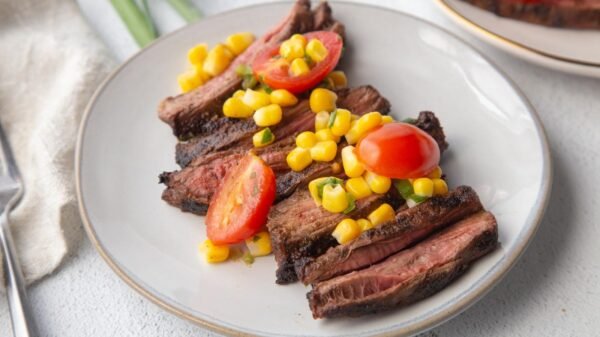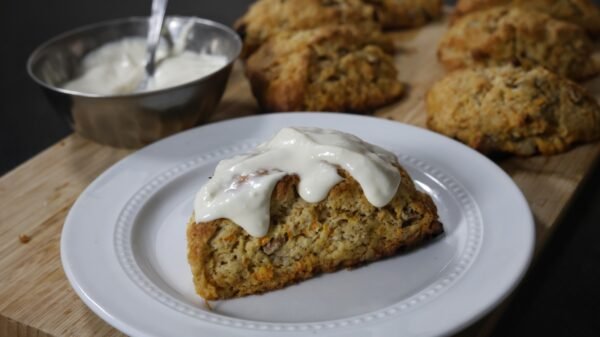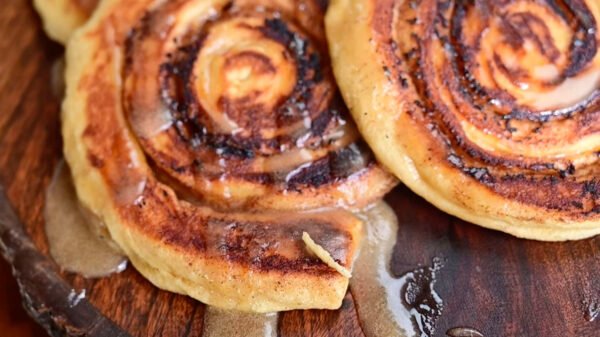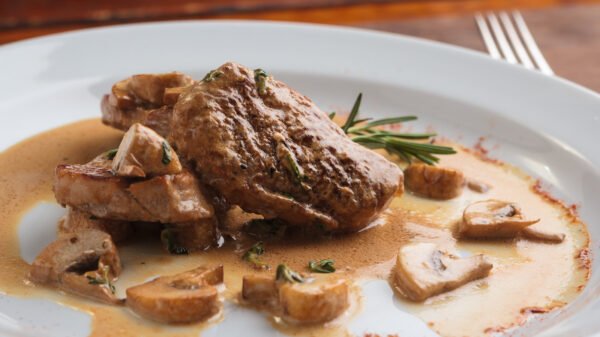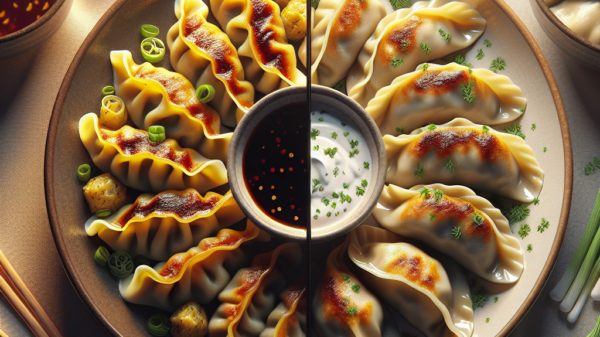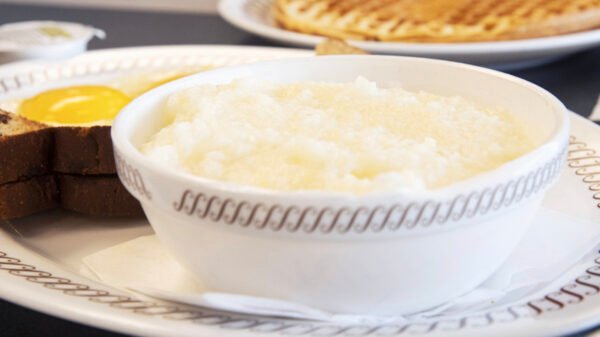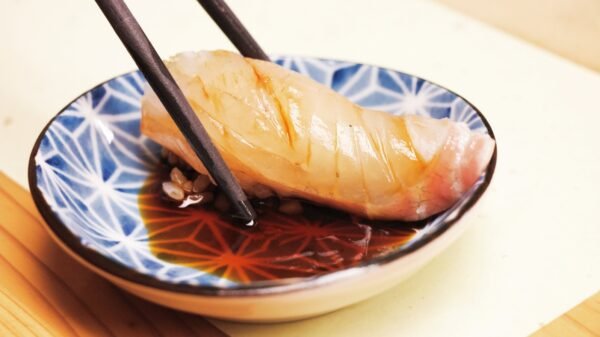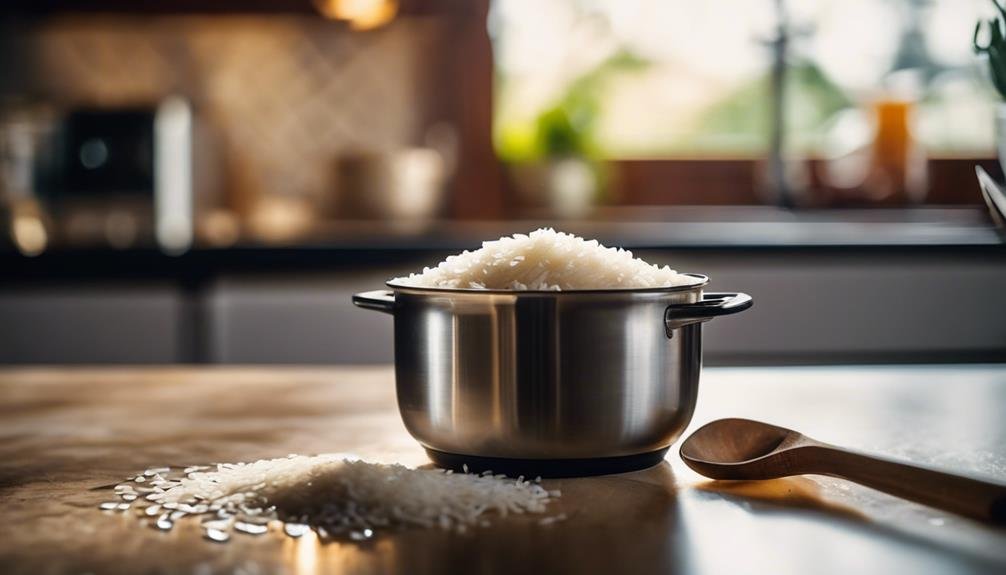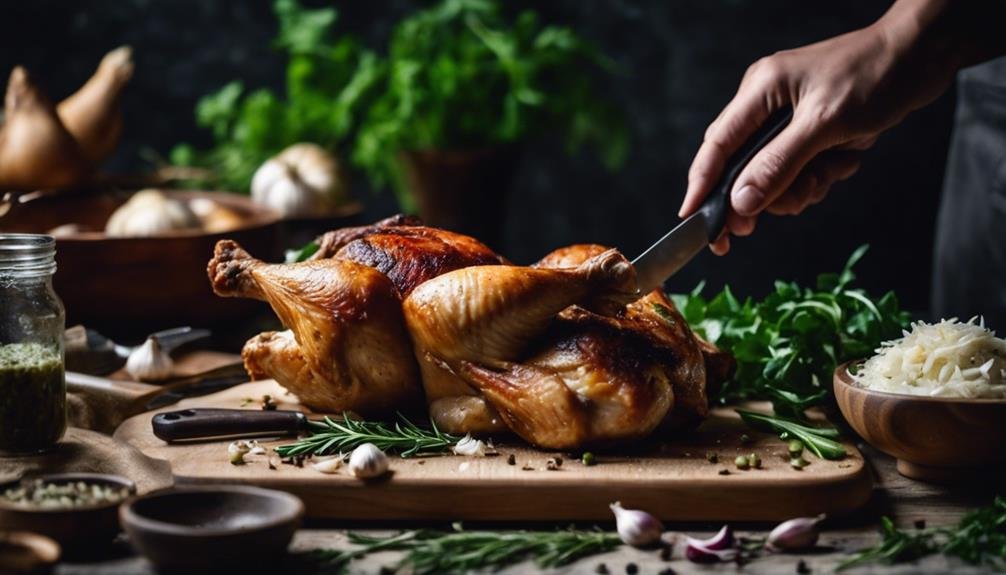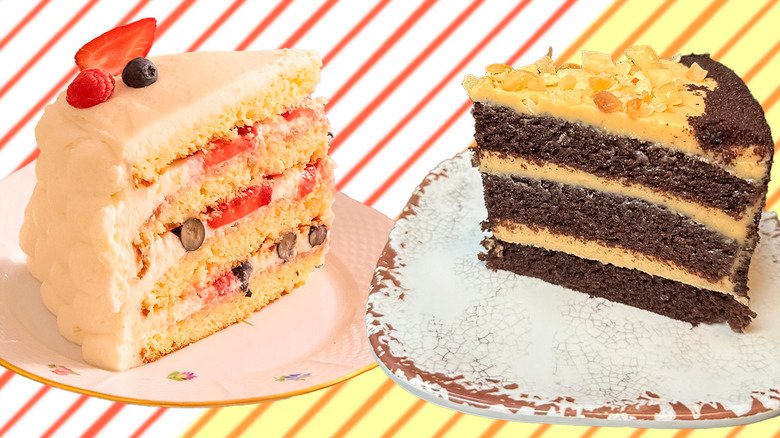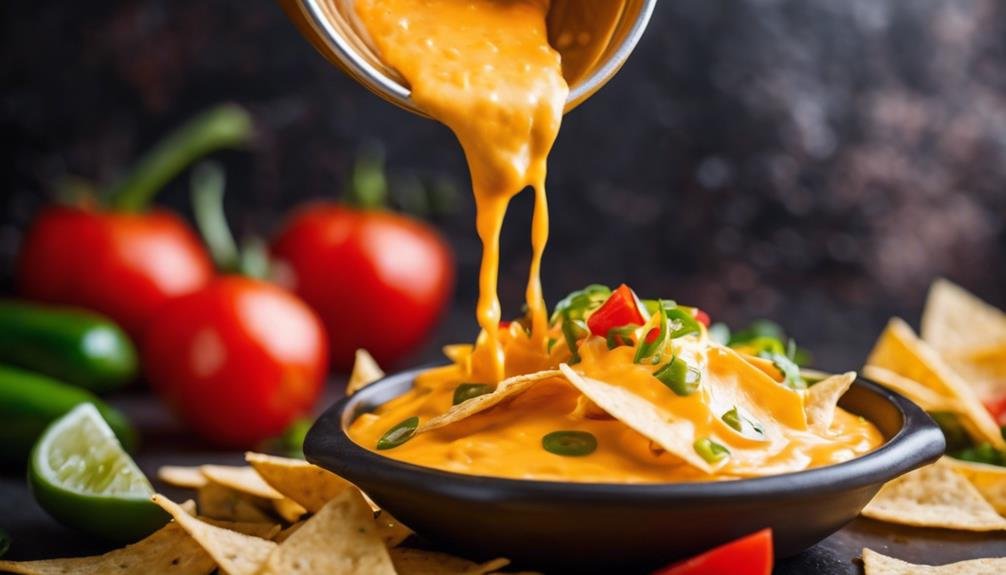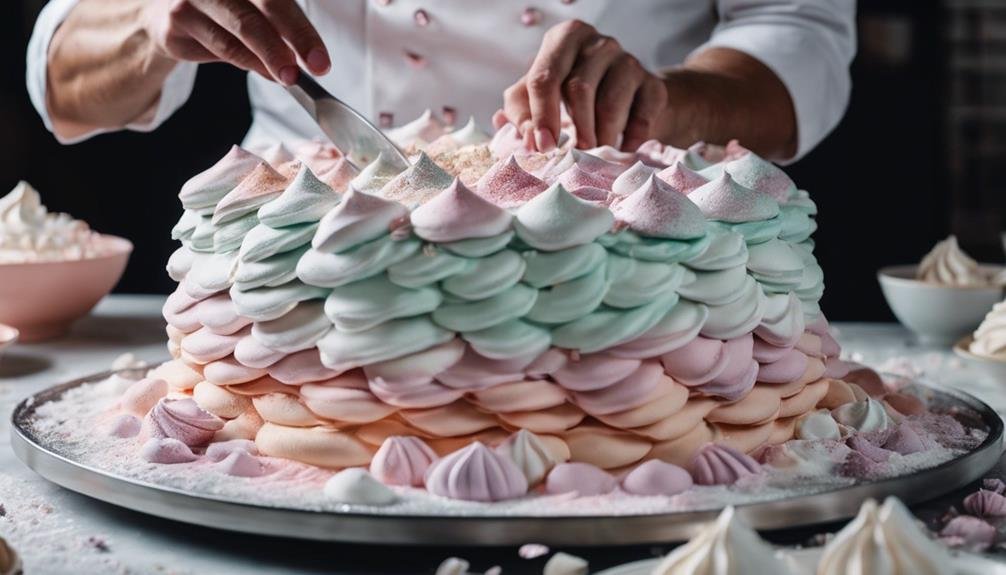Like Goldilocks’ quest for the perfect porridge, your journey to flawlessly cooked rice could end in a mushy disaster if you’re not careful. You’ve likely faced the dread of overcooked rice, a culinary faux pas turning your meal into a gloopy mess.
But fear not; you can keep your grains perfectly fluffy with a sprinkle of wisdom and a dash of technique. Whether mastering the water-to-rice ratio or resisting the urge to peek under the lid, these tips promise to elevate your rice game.
Curious about the secret to avoiding the dreaded mush? Let’s unravel the culinary mystery together, shall we?
Overcooking Rice Key Takeaways
- Use the correct water-to-rice ratio and cooking time for your rice variety.
- Rinse rice until water runs clear to remove excess starch and prevent stickiness.
- Keep the lid on tightly throughout cooking to maintain steam and temperature.
- Allow rice to rest covered after cooking to redistribute moisture for a fluffy texture.
Perfecting Water-to-Rice Ratio
To master the art of cooking rice, getting the right water-to-rice ratio is essential. This ensures that each grain cooks to perfection without becoming a mushy mess. Whether you’re aiming for the comforting fluffiness of short grain or the elegant separation of long grain, knowing the drill is vital. For the novices, stick to a 1:1 ratio for short grain and a slightly generous 1:1.25 for long grain. This isn’t just about measurements; it’s about culinary harmony.
Now, don’t overlook the importance of your cooking vessel. The size of your pot and how snugly the lid fits can dramatically influence the outcome. A tight lid means less water evaporation, keeping that precious steam locked in with the rice, promoting even cooking and absorption.
Beware the perils of overzealous water addition, lest you fancy serving a soggy disaster instead of delightfully fluffy rice. Conversely, skimping on water is a one-way ticket to the land of undercooked, crunchy grains. Adjusting the water-to-rice ratio is more than a science; it’s an art that prevents the dreaded overcooking, ensuring your rice is just right every single time.
Mastering the Cooking Time
Understanding that each variety of rice dances to the beat of its drum during cooking times is key to preventing that dreaded mushy texture. Every grain, from the pearly short grain to the slender grain white rice, demands its unique spotlight on the cookery stage.
Here are some pro-tips to master the cooking time:
- Follow the package instructions like they’re the sacred scrolls of rice cooking. They’re your best bet to avoid turning cooked rice into a culinary mush.
- Use a timer because your intuition might tell you it’s ready, but precision is your real friend. Let it tick to avoid the trick of overcooking.
- Adjust the heat like a maestro. Not every stove whispers the same tune, so learn yours to avoid a burnt encore.
- Every rice has its time – remember, brown takes longer than white. Don’t rush the performance.
- Let the cooked rice sit off the heat, covered, for a few minutes. It’s like a standing ovation with a fork fluffing to finish.
Master these steps; you’ll serve perfection on a plate, avoiding the soggy encore nobody asked for.
The Importance of Rinsing
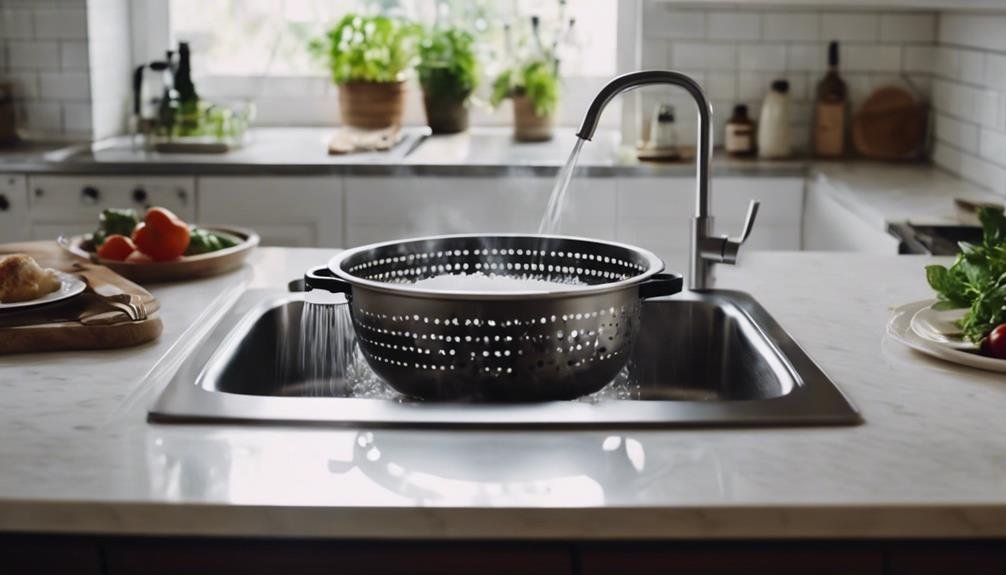
Why skip the rinse? Doing so means inviting a sticky situation, as rinsing rice is essential for achieving that dreamy, fluffy texture we crave. When you rinse rice, you’re doing more than a cursory clean; you’re engaging in a ritual that guarantees each grain can stand alone, free from the clingy embrace of excess starch. It’s not just about avoiding sticky, clumpy rice; it’s about reverence for the perfect plate.
Cold water is your ally, working to separate the grains and banish any gummy texture to the kingdom of cooking mishaps. And yes, it might feel like an eternity, but rinsing rice until the water runs clear is the secret password into the world of perfectly cooked grains. Cloudy water is a tell-tale sign that your rice is shedding its excess starch, so keep at it until clarity prevails.
| Rinse Step | Goal | Outcome |
|---|---|---|
| 1st Rinse | Remove surface starch | Less sticky rice |
| 2nd Rinse | Further separation | Enhanced fluffy texture |
| 3rd+ Rinse | Achieve clear water | Thorough starch removal |
| Final | Inspect clarity | Ready for perfection |
Proper Lid Use and Steam Control
Mastering the art of the well-fitting lid can make or break your quest for perfectly steamed rice. When cooking rice, the difference between soggy and sublime often comes down to steam control and proper lid use. Let’s get into the nitty-gritty:
- Use a well-fitting lid to trap steam and prevent excess evaporation, ensuring each grain gets its fair share of moisture.
- Proper lid placement helps maintain consistent temperature and moisture levels, creating the ideal environment for rice to flourish.
- Avoid lifting the lid frequently; curiosity can indeed kill the culinary cat. Each peek releases steam, disrupting the cooking process.
- Keep the lid on after cooking to allow for steam redistribution, ensuring your rice is evenly cooked and full of flavor.
- A tightly sealed lid is your best friend for controlling steam and ensuring your rice is neither too dry nor too mushy.
Letting Rice Rest After Cooking
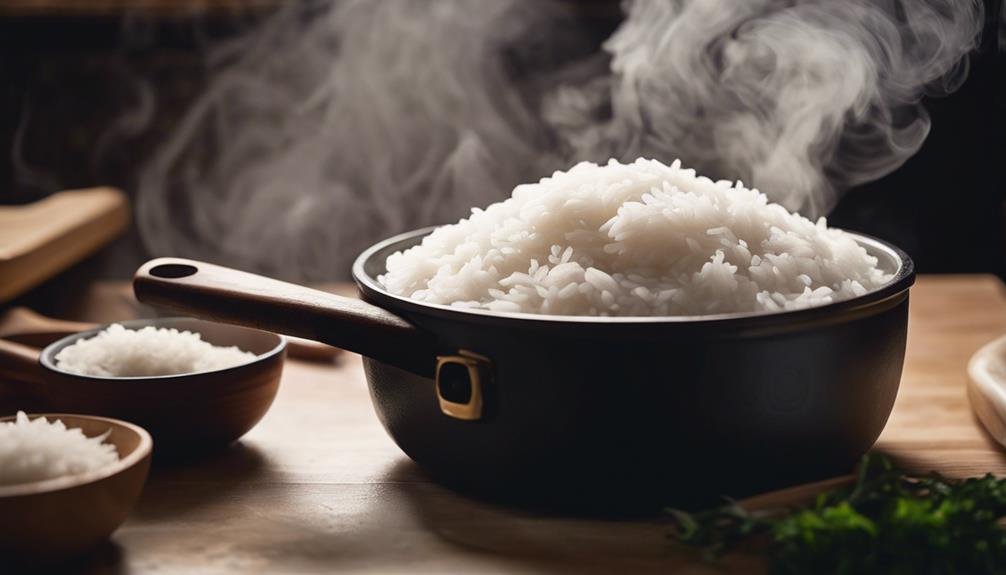
A simple yet transformative step, letting your rice rest after cooking can elevate its texture from good to perfection. It’s like giving your rice a mini spa treatment, where it unwinds, absorbs, and looks its best. This resting period allows for even moisture redistribution, ensuring every grain achieves that sought-after perfect texture.
| Do | Don’t |
|---|---|
| Place a towel over the pot to absorb excess moisture | Rush the process by skipping the rest |
| Let the rice rest for 15-20 minutes | Disturb the rice by trying to fluff it too soon |
| Fluff with a fork to reveal a light, airy consistency | Serve it as is, which can lead to uneven textures |
Frequently Asked Questions
How Do You Keep Rice From Overcooking?
To prevent rice from overcooking, ensure the correct water-to-rice ratio, monitor the cooking time closely, utilize a heavy pot, secure the lid firmly, and allow the rice to sit off the heat once cooked. This will result in perfect rice every time.
How Do You Cook Rice Without Overcooking It?
Cooking rice without overcooking involves precisely measuring the water-to-rice ratio, avoiding the temptation to lift the lid, allowing the rice to rest after cooking, fluffing it carefully, and keeping a close eye on the cooking time.
How Do You Keep Rice From Overboiling?
To prevent rice from overcooking, select a pot with a tight-fitting lid, maintain a gentle simmer during cooking, and avoid lifting the lid to peek. Following the recommended water-to-rice ratio and cooking time closely will ensure perfectly cooked rice every time.
What Causes Overcooked Rice?
Overcooked rice occurs due to excessive water or prolonged exposure to high heat. It’s crucial to balance the water ratio and cooking time to avoid this.
Conclusion
So, you’ve got the scoop on not turning your rice into mush. Remember, it’s all about nailing that water-to-rice ratio and not peeking under the lid like it’s a treasure chest.
Rinse your grains to avoid the stickies, keep a lid on them in your rice cooker to trap that steamy goodness, and let it sleep post-cooking. If all else fails, a rice cooker can be your kitchen BFF.
Follow these tips, and you’ll serve perfection on a plate. Easy-peasy, rice and… breezy?


